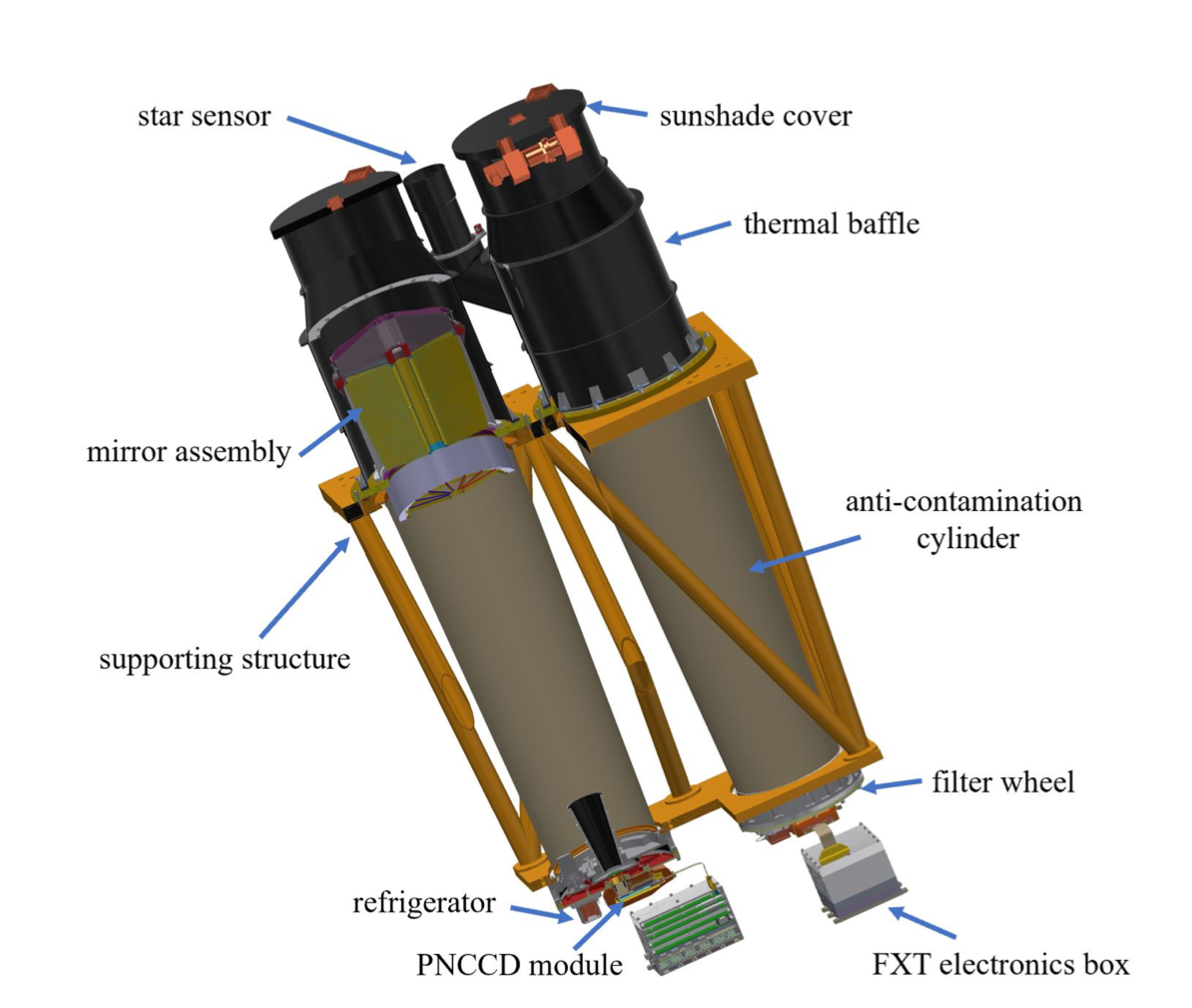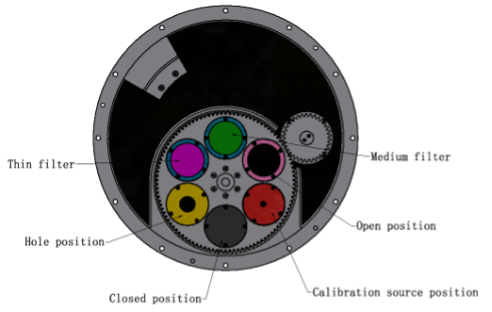Follow-up X-ray Telescope
FXT is a Wolter-I telescope operating in the 0.5-10 keV energy range. It has a narrow field of view (60 arcmin in diameter) and a source localization error of 5-15 arcsec (90% c.l.) depending on the source strength. The FXT is responsible for the quick follow-up observations (within 5 minutes) of the triggered sources from WXT, and will also observe other interested targets during the all sky survey at the rest time.
The design of FXT is shown in Figure 1. The FXT detector is made of two pnCCD modules (the image size 28.8mm × 28.8mm, from MPE). The two pnCCD modules are cooled (-110~-80℃) by two helium pulse tube refrigerators, respectively. The mirror module comprises of 54 nested gold coated nickel shells of Wolter-I type, to be fabricated by Media Lario in Italy The half energy width (HEW) is about 30 arcsec (on axis) at energy of 1keV. The temperature of the mirror module is controlled by several heaters and thermal filters. The X-ray baffle at the entrance of mirror can protect against the X-ray stray-light from single reflections in the Wolter-I type mirror.
The electronic box under the detector performs clock generation, data acquisition, voltage supply and mode switch for FXT.

Figure 1 Preliminary design of the Follow-up X-ray Telescope FXT.
The main scientific characteristics and source requirements of this instrument resulting from the design described above are summarized in Table 1.
|
Items |
Requirement |
Goal |
|
Field of View (FOV) |
Diameter ≥ 38′ |
60’ |
|
Source flux upper limit |
- |
≥ 5Crab; TM ≥ 200mCrab; PW |
|
Effective area |
≥ 100 cm2@1.25 keV, on axis |
≥ 600 cm2@1.25 keV, on axis |
|
Angular resolution |
HPD ≤ 2′ |
HPD ≤ 30″ |
|
Energy resolution |
FWHM ≤ 170eV@1.25keV |
FWHM ≤ 120eV@1.25keV |
|
Energy band |
0.5 - 8 keV |
0.3 - 10 keV |
|
Location precision |
≥ 20″ (detector coordinate) |
≥ 4″ |
|
Frame frequency |
≥1 fps; FF |
20 fps; FF |
|
Mass |
276 kg |
276 kg |
|
Power consumption |
200 W |
200 W |
|
Mission duration |
3 years |
5 years |
The scientific observation modes of FXT camera include the Full-Frame Mode (FF), the Partial-Window Mode (PW), and the Timing Mode (TM). The PW and TM are similar to those of XMM-Newton PN. However, the PW or TM modes are newly developed for FXT pnCCD . FF is the normal mode. The advantage of TM is the good time resolution, and the events are readout continuously without position information. PW is a special mode, in which only a small imaging area is active so as to achieve good time resolution. These three operation modes of FXT could be chosen through sending orders from ground.
In front of the pnCCD module, there is a filter wheel with 6 options. Besides the open position, FXT has two kinds of filters mounted on the filter wheel: medium filter, thin filter (Figure 2). The hole position, calibration source position and closed position could be applied in some special scenarios.

Figure 2 The configuration of FXT filter wheel.